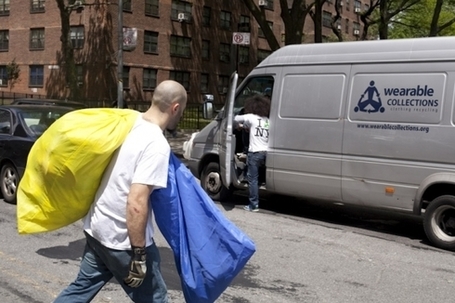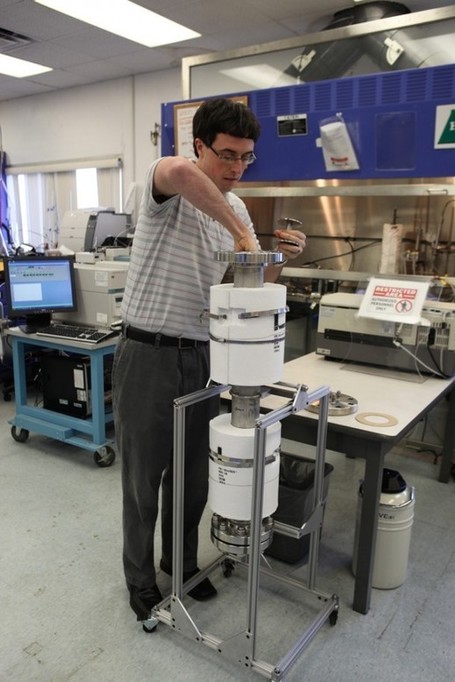The book describes ten personas for innovation, grouped into three broad types
- Learning personas
- The Anthropologist
- The Experimenter
- The Cross-Pollinator
- Organising personas
- The Hurdler
- The Collaborator
- The Director
- Building personas
- The Experience Architect
- The Set Designer
- The Caregiver
- The Storyteller
Anthropologist
The anthropologist seeks to create new learnings and insights by watching people interact with their environment. For instance, trying to work out why a company does so little to separate its waste for recycling, even though the company can save money, an Anthropologist might go into the company and watch, listen, learn. In this mode, values and judgements are left out of the frame. The result is a deep understanding, and thus a solution with high "touch"
An example of a business that learned through the Anthropologist persona is Wearable Collections in New York City. Having observed people struggle to recycle clothing through thrift shops, the company came up with the idea of bringing recycling to the people. It puts recycling bins into residential apartment buildings, and helps organise clothing recovery drives through schools and clubs (with the drive being used to raise funds).
 |
| Wearable Collections, New York City |
The Experimenter
The experimenter creates new learnings buy trying things out. It is, perhaps, the common understanding of getting to ideas for innovation. Try out many things, fail regularly and small, and in the process, come up with something new.
The classic case in waste management are the researchers trying to come up with new ways to recycle different materials. The recycling of rubber, for instance, has many different parties working on solutions. Fro instane, a group of researchers at Fraunhofer Umsicht in Oberhausen, Germany is working on a method to recycle scrap rubber as a modifier for plastics.
The Cross-Pollinator
Taking learnings from another sector, a different industry perhaps, and applying them to their own, the cross-pollinator is always looking for unexpected way of looking at things.
An example is Material Mix, a company that has set up an online trading platform to develop markets for waste materials. The company has seen how online marketplaces improve trading efficiency, and is looking to use these learnings to develop an online marketplace for people with industrial byproducts to trade with those who use the byproducts are materials into their production.
The Hurdler
Finding a vast array of obstacles in the way, the hurdler finds way over, around and under the obstacle to get the innovation to fruition. This is likely required in any innovation pathway - the way to the light is never clear.
An example of a company in this space is Re-Nuble, a company that wants to establish a network of small anaerobic digesters around the USA that take food waste and convert it into electricity and compost. To get to this point, they have overcome a whole suite of obstacles, including funding, but trying out every solution that comes to hand.
The Collaborator
Bringing together a diverse team to solve a problem, the collaborator is happiest among a range of people, and tends to let solutions find themselves.
The Director
The director brings together a group of people, and also sparks their creativity to develop new ideas. This is all about marshaling resources to achieve an outcome.
I think that the classic example of the director type work in action is NASA - large projects bringing together a range of people. NASA is, in fact, working in the waste field, trying to develop a way of converting waste generated during a deep space mission into energy.
 |
| NASA, developing waste to energy for deep space |
The Experience Architect
The experience architect tries to craft an experience for the customer that he or she will never forget. Innovation, in this case, is expressed through the way in which customers engage with the solution.
A fun example of the experience architect in action is a bottle collection machine demonstrated in Europe - people recycling bottles are encouraged by the creation of an arcade game type experience.
The Set Designer
The set designer looks to create a physical space that can express and enable the innovation. I like to think of this as creating spaces for people to feel safe to explore.
In waste, I see this as a bit simpler again - it is the creation of an environment where people can be comfortable experimenting with new ways to see waste. An interesting example is NewsPaperWood, which makes "wood" from recycled newsprint. What it does that is especially interesting is the "wood", just like timber, but in this case each layer is not a tree's growth ring, but rather a layer of paper. NewsPaperWood has been used to make all sorts of interesting work.
 |
| NewsPaperWood |
The Caregiver
The caregiver anticipates customer needs and tries to be there when they arrive. The analogy here is the medical industry - the caregiver tries to make the customer feel absolutely wanted.
Examples of caregiver companies can be, but are not always, found in charity led organisations. Two that seem to personify this spirit are Yooz in Scotland (reclaiming, reusing and recycling building materials) and Soft Landings in Australia (recycling mattresses). Both try to make the waste collection straightforward, and guide the materials to a new home.
The Storyteller
The storyteller is the final of the ten faces, and looks to build a story around the company. Stories are powerful ways of getting messages across to people, and so a good storytelling organisation can gain a lot of traction.
A great example of storytelling in waste is Culinary Misfits in Germany. They only use produce that is too deformed for supermarkets, and make it into food that is explicit about the origin of the produce as undesirable. For instance, it makes Crooked Parsnip and Twisted Cucumber Soup.
 |
| Culinary Misfits |
How we can do better
This whistle-stop tour of the ten faces of innovation gives a taste of how many clever people are out there doing amazing things, but also gives a sense of the scale of the opportunity. Applying the ten faces of innovation to what we do in waste management, the amount of innovation that could be implemented is almost limitless.
All of the examples here are from my scoop.it magazine The Future of Waste, a regularly updated source of ideas in waste innovation as developed by others. Please feel free to check it out, and also to suggest new businesses to me.

No comments:
Post a Comment